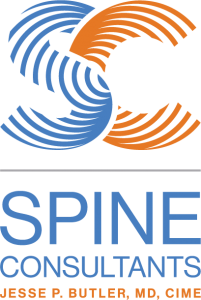If you are experiencing back pain or leg pain, posterior lumbar interbody fusion surgery can help relieve your pain. PLIF relieves spinal pain by easing pressure on the nerve roots from a collapsed disc. This surgery is carried out to encourage the vertebrae in one’s back to fuse together. With time, spinal fusion can help lessen or even eliminate back pain problems and provide long-term relief.
Purpose of a Posterior Lumbar Interbody Fusion (PLIF)
A posterior lumbar interbody fusion procedure involves removing the disc causing pain in the back or legs and fusing the vertebrae together with bone grafts. The procedure is known as a posterior operation since the spine is accessed through a back incision. During the surgery, instruments are used to support the spine and create space for the bone grafts.
What is PLIF Surgery Used For?
Instability, weakness, or pain in the spine may indicate you should consider this type of surgery. If more conservative treatments like medications, back braces, or physical therapy fail to control chronic, severe lower back pain, PLIF may be recommended. There are a number of conditions of the lumbar spine that can be treated with PLIF:
- Degenerative disc disease
- Herniated disc
- Vertebral fractures
- Abnormal spine, such as scoliosis
- Deficiency or instability in the spine caused by an infection or tumor
- Spondylolisthesis in which vertebrae slide forward onto each other
PLIF Spine Surgery Process
A PLIF operation is performed under general anesthesia on a specialized operating table with the patient lying face down. The surgeon makes an incision in the lower back and prepares the patient for surgery.
Access to the Spine
The muscles are pushed away, exposing the lamina of the vertebra. A surgeon uses instruments to cut away the parts of the lamina, facet joints, and the bony parts of the lower vertebrae.
Taking out these parts in the bones lets the surgeon see the disc and nerves in the spine. The surgeon helps relieve pressure on the pressurized spinal nerve by taking out most of the intervertebral disc with a grasping instrument.
Placement of the Screws and Plates
Pedicle screws are set within the pedicles with an awl. After drilling a hole into a metal plate, the surgeon inserts screws into the pedicles, resulting in screw tips at the center of the vertebrae. A screw and a plate are then positioned on each side of the spine. The pedicle screws are then screwed into the metal plate in the lower vertebra.
Bone Graft Placement
Bone grafts are inserted in the space of the disc after the vertebrae have been spread apart. The surgeon secures the screws to maintain this open disc space. Afterward, they put the bone grafts between the vertebrae. Bone grants should help the vertebral bodies fuse. In some versions of this surgery, a disc spacer or graft cage may also go into the space to help the fusion process.
Compression of the Vertebral Bodies
The surgeon loosens the screws and squeezes the vertebrae together to stabilize the spine as fusion takes place. Tightening the screws within the vertebrae allows the grafts to fit snugly between vertebrae. The pedicle screws are locked to the metal plate by small screws called blockers. The surgeon then closes and dresses the incision to end the surgery.
What Patients Can Expect After PLIF Surgery
The recovery rates may vary between patients after the PLIF procedure, but it should enable you to resume your regular activities. A majority of patients can return home within three to five days of surgery. Physical and occupational therapists teach patients how to rise from bed and walk independently before they return home. To prevent strain injuries, patients should avoid twisting, lifting, and bending at the waist in the first two to four weeks following surgery.
After the two and four weeks have passed, patients can experience an improvement in their symptoms and their postoperative pain has decreased. Patients should eventually be able to resume their preoperative activities, according to the surgeon. In four to six weeks, the pain will subside and the back muscles will become stronger, allowing the freedom to bend, twist, and lift with ease.
Your surgeon can advise you when you are ready to return to work and resume your work duties. You may need to refrain from heavy lifting and strenuous activities if you underwent surgery for the removal of two or more discs.
Posterior Lumbar Interbody Fusion Can Help Ease Back Pain
Maintaining a positive mindset, setting realistic expectations, and following your post-operative guidelines can help in having a successful recovery process from a posterior lumbar interbody fusion. The success rate for PLIF varies from patient to patient, depending on the type of pain a patient is experiencing and the condition of the patient’s back. If you feel that a fusion is right for you, schedule an appointment with Dr. Butler by completing our contact form.

